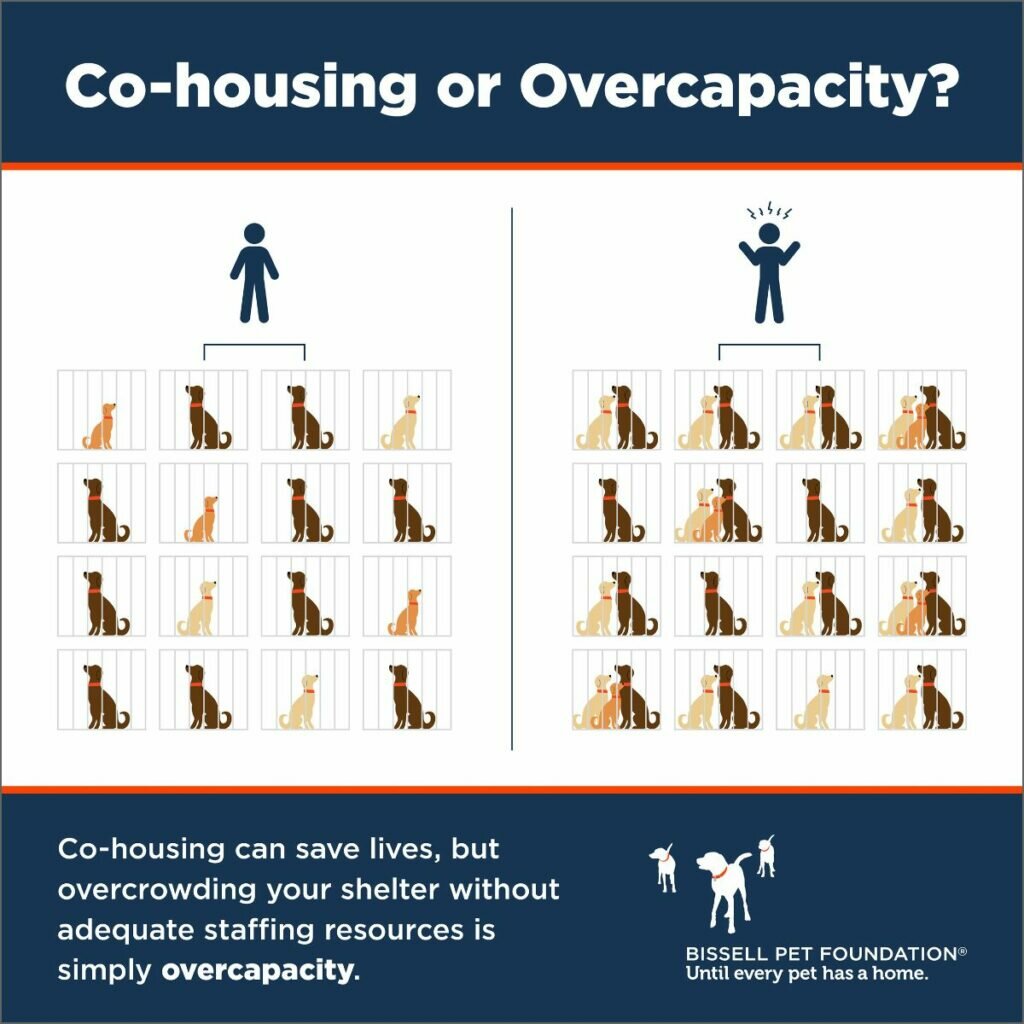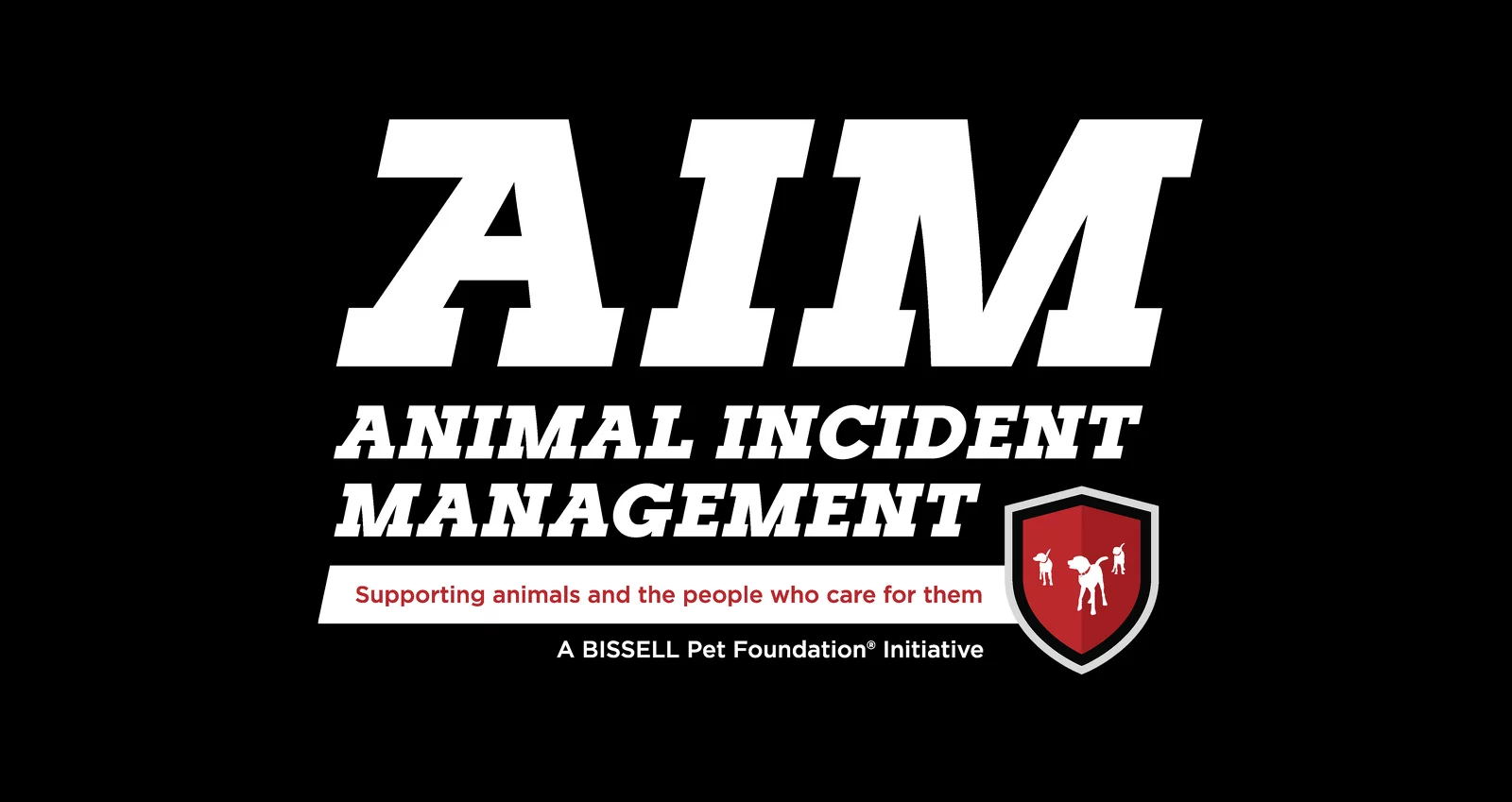Co-housing or Overcapacity?
Overcrowding in animal shelters is happening throughout the country. Data shows that more animals are remaining in the shelter for a longer period of time. Many shelters are looking to the practice of co-housing to increase capacity and enrich the pets in their care. When does co-housing become overcapacity, unhealthy, and dangerous?

If a shelter is tripling capacity through co-housing without increasing staff, this is a red flag that staff and animals could be in danger. I wanted to learn more about co-housing considerations, so I asked an expert. Melissa Miller has directed emergency shelters for crisis and disaster and municipal shelters. She is an expert in field shelter operations from her time at Humane Society of the United States, Detroit Animal Care and Control and as an independent support and contractor for animal welfare organizations. She is currently the Director of St. Clair County Animal Control in Michigan, a certified Canine Behavior Consultant and a Fear Free Profressional. Melissa has posed some questions that shelters should ask themselves before co-housing at your facility becomes a consideration:
On an icy morning in February of 2012, the day after seizing over 180 animals in rural northeast Ohio, I began my morning walk through the emergency shelter. My heart dropped when I saw an empty kennel in the first row. The yellow lab mix was missing. I began moving slowly down the aisles created in the county fairgrounds beef barn and saw an unexpected sight: the yellow lab was miraculously in with a reddish shepherd mix. In all the hullabaloo of being removed from the only home he knew, processed and sorted into individual kennels, Yellow Lab could not bear to be apart from his Red Shepherd buddy and had spent the night escaping his kennel, finding his friend and digging into the dirt floor to create a tunnel into the other kennel. The pair that came to be known as Pancake and Waffles were co-housed the remainder of the case.
Co-housing in sheltering isn’t a new concept. As early as 2011, the ASPCA was presenting on appropriate options for co-housing styles, adequate facilities, and techniques for pairing dogs. In 2015, UC Davis Shelter Medicine Guidelines included ensuring dogs’ social needs through playgroups and co-housing for dog-social dogs be implemented for any stay longer than two weeks. By 2017, additional studies had shown the reduction of stress-based behaviors in co-housed pairs of dogs in the shelter environment.
So why is this topic suddenly such a hotbed of discussion in the sheltering world? As shelters struggle with an intense increase of medium-to-large dogs and the lowest national adoption rates since 2012, shelter leadership, volunteers and staff are wracking their brains to come up with a solution for space. But how can we assess if we are truly co-housing for the benefit of dogs or if we are going over capacity for care?
- Are you in alignment with your state’s shelter regulations? We know that many times these regulations are far behind the times when it relates to sheltering best practices. However, it’s important to note regulations based on size, age, and sex that may exist in your state.
- Is your team trained for safety? This includes low-stress or Fear Free handling, appropriate use of handling equipment, and emergency situations unique to your facility. It also includes a safe amount of space to allow dogs to stand up, turn around, and move away from each other to show clear body language.
- How effective are your veterinary medical and reporting protocols? Is your team still struggling with vaccines and parasite control on intake? How adept is your staff at reporting signs of illness, starting treatment-in-place or isolating? How frequently is your shelter experiencing outbreaks? Is your medical team up-to-date on emerging shelter illness management regarding Canine Influenza, strep. zoo, and pneumovirus?
- What is your team’s proficiency with canine body language and social cues? Functional patterns in playgroups are key to finding the right balance between an enjoyable romp and pair or collective of canines who can co-exist in close quarters.
- How are you supplementing staffing? Increase in shelter population means increase in observing each individual animal on rounds and management of shelter cross-contamination. Co-housing means an increased attention to detail. With burnout and compassion fatigue rampant in our industry, we can’t afford to ignore capacity for care guidelines. Minimum staffing guidelines still include a minimum of fifteen minutes per animal.
No one can deny the social nature of dogs as a whole and the benefit to play, social outings, and sharing space. Mastering the fundamentals is imperative in finding the balance between co-housing and compromising capacity for care.
Thank you, Melissa!
For more information on sheltering best practices, please visit the Association of Shelter Veterinarian Guidelines: https://www.sheltervet.org/resources/guidelines
Until every pet has a home,


